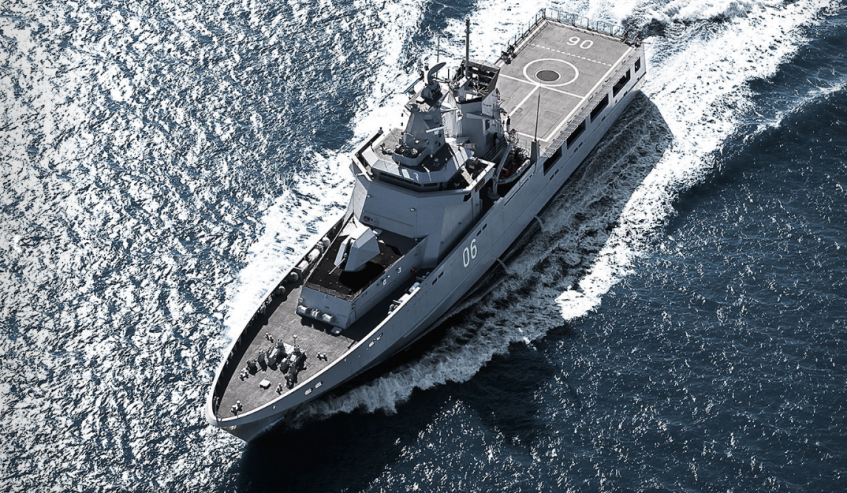Years before the new frigates or submarines start construction, the first of the new Offshore Patrol Vessels (OPVs) will be in the water under the $4 billion SEA 1180 program.
To continue reading the rest of this article, please log in.
Create free account to get unlimited news articles and more!
Construction of vessel number one will start at the Techport shipbuilding precinct outside Adelaide in the third quarter this year, followed by vessel number two.
Then in 2020, production will shift to Henderson, Western Australia, for construction of the next 10 vessels, making way for the start of production of Future Frigates under project SEA 5000.
The OPVs form a major part of the government’s continuous naval shipbuilding program alongside the SEA 5000 Future Frigates Program, SEA 1000 Future Submarine Program plus the Pacific Patrol Boat replacement program.
In November, the government announced German shipbuilder Lürssen’s OPV design had been chosen over designs proposed by German firm Fassmer and Dutch shipbuilder Damen.
The $4 billion nominated price tag is at the high end of the $3-4 billion cost nominated in the 2016 Defence Integrated Investment Program.
The Lürssen design is based on the company’s Darussalam Class OPV constructed for the Royal Brunei Navy, and the 12 new vessels will replace the Navy’s 13 hard worked Armidale Class patrol boats.
These are much bigger than the Armidales – 1,600 tonnes and 80 metres, as against 300 tonnes and 56 metres – with much improved seakeeping, endurance and range.
Significantly, the new ships – the Navy hasn’t yet decided on a class name, though patrol boats are traditionally named after regional towns and cities – feature a landing deck, able to land a MRH-90 sized helicopter.
But the absence of a hangar means helicopters can’t operate long-term from these vessels.
However, the Navy has other plans. Under Project SEA 29 Phase 5, it will acquire an unmanned aerial system (UAS) for the OPVs.
Crew will be around 40 but the ship can accommodate up to 60.
Lürssen has already nominated L3 Australia, Penske and Saab Australia as its major sub-contractors.
The government’s announcement of the OPV winner raised eyebrows for one particular decision, the full implications of which are still being worked through.
Long before the final decision, Lürrsen and follow SEA 1180 contender Damen had formed teaming arrangements with ASC Shipbuilding and WA engineering firm Civmec.
Fassmer partnered with WA shipbuilder Austal.
So surely that mean Austal would dip out – not at all. As expected, the two Adelaide vessels will be constructed in conjunction with ASC Shipbuilding.
Those in WA will be built by Civmec and Austal.
Lürssen said it would lead an experienced team made up of experienced shipbuilders “as directed by the government.”
As well as new Australian jobs – 400 each in Adelaide and Henderson – the project could be an export winner.
Lürssen chief executive Peter Lürssen told Defence Connect in June that the company had been looking to establish a base outside of Europe to design and build warships for the export market.
The OPV project offered a credible opportunity to build an Australian sovereign shipbuilding capability and to establish an export-led industrial base.

 Login
Login







